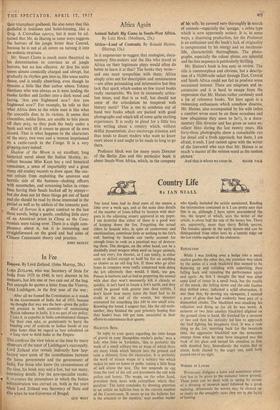HALICTUS BEES
`In reply to your query regarding the little heaps of gravel in your Hampshire reader's paths,' says a lady who lives in Yorkshire, 'this is probably the work of a small solitary bee or wasp of which there are many kinds which burrow into the ground and raise a chimney from the excavation. It is probably the work of mason wasps or a solitary bee which makes its nest on lawns or paths, raising a little heap of soil above the nest. The bee suspends its egg from the roof of the cell and provisions the cell with pollen and honey. The wasps, on the other hand, proyision their nests with caterpillars which they paralyse.' The letter concludes by drawing attention to an article on halictus bees in the current number of the Countryman. 'It seems to me the halictus bee is the solution to the mystery,' says another reader who kindly included the article mentioned. Reading the information contained in it I am pretty sure that this is so, although I have never encountered the bee, the largest of which, says the writer of the article, is about half the size of the honey bee. There are, apparently, more than thirty British species. The females appear in the early season and can be distinguished from other bees by a'central ridge on the last visible segment of the abdomen.


































 Previous page
Previous page